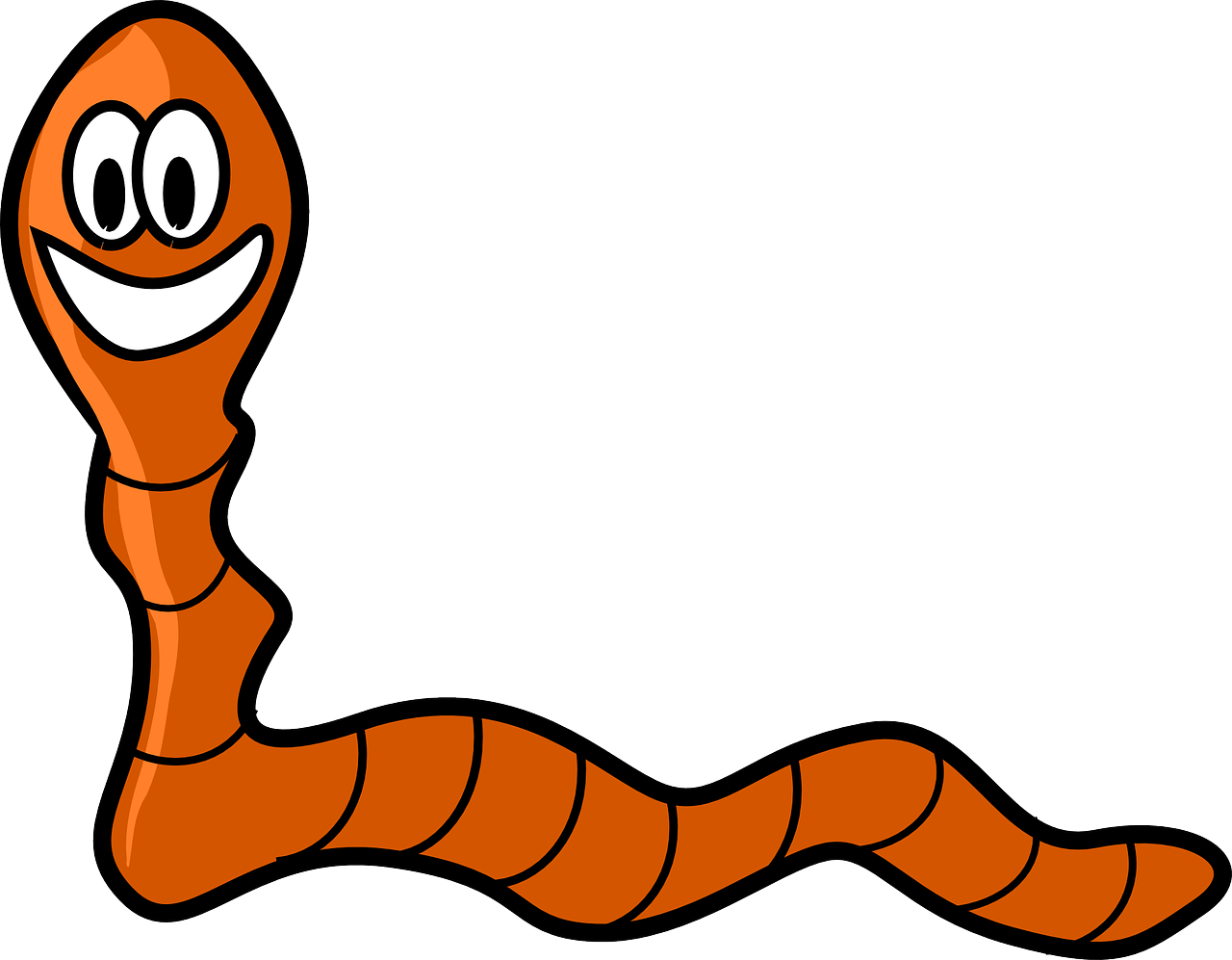Composting Worms "Red Wigglers": Everything You Need to Know
Table of contents:
What are Red Wiggler Composting Worms?
Why are Red Wigglers so useful for Composting?
1. High temperature tolerance
2. Easy to buy
3. Fast compost generation
4. Can be fed a wide variety of organic matter
5. Multiple bedding options
6. Prefer living in colonies
7. Stick to contained living
How to care for Red Wigglers?
1. Don't expose them to light
2. Ensure proper moisture
3. Facilitate Oxygen flow
4. Replenish food
5. Help them move around
How to accelerate vermicomposting with Red Wigglers?
1. Ensure small food particles
2. Keep a watch on Carbon to Nitrogen ratio
3. Ensure the bin is of the right size
4. Use compost enhancers
5. Keep predators at bay
FAQs
How many red wigglers does it take to start a worm bin?
How fast do red wigglers multiply?
How do you encourage red wigglers to reproduce?
Do Red Wigglers like mango?
What is the best home for Red Wigglers?
Do red wigglers eat fungus?
Do red wigglers sleep?
Conclusion
What do you think of when you hear the word "Vermicomposting"?
If the answer was worms, that's what most of us think about, especially the Red Wigglers.
But how much do you know about them?
Today's post will go into every detail of the Red Wigglers Composting Worms to help you know more about them, make them thrive, and consequently aid the compost generation process. Post below will also answer crucial questions about red wigglers like Are red worms invasive?, Do red wigglers sleep? And more.
Let's start with the very basics.
What are Red Wiggler Composting Worms?

According to Oregon State University, Red Wiggler worms,whose scientific name is Eisenia Fetida, delve near the surface and feast on organic matter. Inside their digestive tract, microbes convert the decaying organic matter into worm castings, which are expelled from their bodies. These worm castings are nothing but compost.
Before we discuss the details of vermicomposting, let's examine their anatomy.
- Anatomy:
The anatomy of Red Wigglers is similar to that of other earthworms. They start with a pointed head and end with a flat tail. The digestive tract (spoken of above) starts right after the worm's mouth. The digestive tract consists of numerous parts, but the gizzard and stomach are the most important.
The gizzard crushes and grinds the food before passing it to the stomach, where it breaks down. Thereafter, it passes through the intestine, which initiates the enzymatic action to digest the food, leading to the formation of casting, which is expelled from the body.
- Reproduction and Life Cycle:
One of the primary reasons Red Wigglers are so popular is their fast reproduction rate. A pair of Red Wigglers can form up to 3 cocoons per week, each containing 3 worms or even more. The cocoon hatches approximately 3 weeks later. The infant worms can reach sexual maturity in approximately 42 days. Since Red wigglers life cycle can be up to 5 years, their population can grow exponentially (more compost generation!) during this period.
The only caveat for such high population growth is that the habitat must be ideal, which is covered in the next section.
- Ideal habitat:
The ideal habitat of Red Wigglers includes organic matter that they can feast on. Usually, they live just beneath the surface to avoid light. The temperature of the mixture in which they reside should be between 40°F to 90°F. In the summer, they will actively go deeper than 6 inches to find cooler areas as they don't prefer heat. The cocoons that they form can handle even harsher temperatures.
If you have read the above description carefully, you'll notice that it's easy to recreate such a habitat within the worm bin, and that's why they are so popular among vermicomposters.
- Ideal Red Wigglers Food:
Red Wigglers feast on the organic matter in their habitat. Therefore, when preparing the bin, be careful about what you put in it.
Some worthy options for feeding red wigglers include:
- Fruits like apples, bananas, peaches, etc.
- Leftover fruit pulp from juicers
- Worm food
- Crushed egg shells, coffee grounds
- Shredded paper, Shredded cardboard
- Green vegetables like Spinach, Romaine
Keep in mind that the organic matter should be devoid of any chemicals.
Red Wigglers also eat their bedding, which should ideally be made from organic matter, shredded paper, or cardboard without harmful inks.
Now that you know their anatomy, life cycle, habitat, and food, it's time to understand why raising red wiggler worms is such a good choice for composting.
Why are Red Wigglers so useful for Composting?
Red Wigglers aren't the only worms suitable for Vermicomposting. However, they are widely regarded by many as the best ones. The reasons for the same are as follows:
1. High temperature tolerance
Let's accept it! Worms have delicate skin. That's why they are always susceptible to their surroundings and the temperature. However, Red Wigglers are more temperature-tolerant than their counterparts. As highlighted above, Red Wigglers can handle temperatures between 40°F to 90°F.
Some of their counterparts suitable for vermicomposting include European and African nightcrawlers. Both these varieties require a lower ideal temperature. This essentially means that Red Wigglers can survive higher temperature variations, which makes them a good choice.
2. Easy to buy
Red wigglers are the most popular composting worms. Needless to say, their availability isn't a problem because of this. In fact, you can buy Purebred Red Wigglers in bulk online. Click here to learn more.
Since they are most popular, they are easily available, which certainly adds to the convenience of using them for vermicomposting.
3. Fast compost generation
Simply put, the worms that eat the fastest usually generate compost the fastest because, realistically, these are tiny little creatures and, therefore, can't hold onto the waste for long.
In this race, Red Wigglers are ahead of their counterparts like Nightcrawlers. They eat more each day and, therefore, lay more worm castings each day, which means faster compost generation. If you are wondering, how much can they eat in a day? The answer is organic matter equal to their body weight daily.
Won't you prefer worms that generate compost faster?
You bet!
4. Can be fed a wide variety of organic matter

Another reason why red worms are popular for vermicomposting is because they can eat a wide variety of decaying organic matter (as highlighted above). According to North Carolina State University, you can feed them any organic matter if it doesn't contain high ammonia or salt.
This is a relief for anyone with a worm bin or planning to set one up. You need not worry about cherry-picking the food; therefore, maintaining the worm bin becomes easier.
5. Multiple bedding options
Red wigglers eat the bedding as well. They usually lay their worm castings within leftover bedding. Since they eat most organic matter, you can prepare their bedding from numerous materials. It means preparing their bedding is easier which certainly makes preparing the worm bin convenient.
6. Prefer living in colonies
Red wigglers prefer to stay in colonies. Therefore, once you add a pound of red wigglers to a bin, you need not worry about reproduction or consumption of the food you add. Also, as long as the bin conditions are ideal, you won't have to worry about them wiggling their way out of the worm bin.
It means if you're wondering Are red worms invasive?, they are not. Once you put them into the bin, they are likely to stay there which once again makes them suitable for vermicomposting.
7. Stick to contained living
According to North Carolina State University, earthworms will always attempt to move away from light. Besides, if they are exposed to light for more than 1 hour, they are likely to die.
Apart from that, as highlighted above, they like to live in colonies. Also, any creature that has ample food supply in its vicinity isn't likely to migrate either.
Wondering why all these facts are being highlighted?
Because all these facts make them very unlikely to leave the bin. It means as long as you are maintaining the right conditions in the bin you won't have to worry about them moving out of the bin. As long as they are in the bin, they will continue to generate vermicompost.
Due to all these reasons, Red Wigglers are the best choice for vermicomposting.
How to care for Red Wigglers?
Red wigglers are resilient, but they do have their shortcomings, which you need to be aware of to protect Red Wigglers.
1. Don't expose them to light
Red Wigglers don't like light. That's why they tend to live within their bedding. Under no circumstances should you expose them to light. A few precautions you can undertake to achieve this include:
- The bin should be at least 2' deep, if not more. The bedding should be a few inches below the upper surface so the worms can easily live in it. According to Iowa State University, Red wigglers only go 3 to 8 inches below the surface. That's where the bedding should be. The bedding should be at least 3 inches thick and should be replenished periodically.
- The worm bin should always have a lid on when the worms are inside.
- Under no circumstances should you keep the lid open, especially during the daytime. It will help you avoid exposing worms to direct sunlight.
Keeping worms away from sunlight aids in the reproduction and casting generation speed.
2. Ensure proper moisture
According to the Nature Environment and Pollution Technology Journal, the moisture content in the worm bin should be as high as 80%.
The question that arises is, how can the moisture level be tested?
Take some organic matter out of the bin and squeeze it. Ideally, a few water droplets should come out of it. If more drops come out, the mixture will be too moist, and it might be wise to add more organic matter.
If less water comes out, sprinkle some water on it.
3. Facilitate Oxygen flow
The density of the worm bin contents matters a lot as well. The content and bedding should be well spread out and not in a lump. Such a structure facilitates air and oxygen flow. Since worms breathe through the air, this is crucial for their well-being.
4. Replenish food
According to Oregon State University, Red Wigglers can eat decaying matter equivalent to their weight daily. At the start, add red wigglers food accordingly. Once their population increases, you might have to feed them more. However, instead of overfeeding, gradually increase the quantity and monitor the bin frequently to add more before the current food stock runs out.
5. Help them move around
Always bury or place the food in different bin areas. Doing so encourages the worms to move around, which helps them explore the different areas of the bin and consume organic matter from different parts of the bin.
How to accelerate vermicomposting with Red Wigglers?
As highlighted above, Red Wigglers consume food equal to their weight daily. However, you can do a few things to accelerate the vermicomposting process further.
1. Ensure small food particles
The smaller the pieces of organic matter you place in the bin, the faster the red wigglers can consume and digest it. That's why before adding the organic matter, either shred or chop it into small pieces to accelerate consumption and, therefore, the generation of castings.
2. Keep a watch on Carbon to Nitrogen ratio
According to the American Chemical Society, decaying organic matter, whether sourced from plants or animals, can produce ammonia.
Red Wigglers are highly sensitive to ammonia. The best way to avoid ammonia is to ensure a high carbon-nitrogen ratio within the worm bin. It should be above 20:1. When adding worm bedding or worm bin contents, choose the materials wisely. Organic matter that has less nitrogen includes:
- Cornstalk
- Straw
- Sawdust
- Dead leaves
Any green waste is high in nitrogen and that's why it should be dried or decomposed before adding it to the worm bin.
3. Ensure the bin is of the right size
Above, we spoke about the depth of the bin. However, consider the overall bin size as well.
Ideally, go with a bin that is 3' x 3' in size. The reason why you shouldn't use a bin smaller than this is because:
- Smaller bins won't protect the worms extensively against outside temperatures.
- It's easy to maintain moisture inside bins of this size.
- Bin of this size provides plenty of space for worms to move around and generate compost.
4. Use compost enhancers
Any organic matter that consists of microbes already will accelerate the production of compost. A few options that fulfill this requirement include:
- When you use aged manure, there are plenty of microbes in it. However, not every manure can be used.
- Any fruit pulp that has started decomposing will meet this requirement.
Apart from this, you can leave the organic matter out in the open so that the decomposition begins and then add it to the worm bin. It will ensure that the microbes in the organic matter increase.
Adding such organic matter accelerates compost generation.
5. Keep predators at bay
You need to inspect the worm bin from time to time to watch out for red wiggler predators.
Examples of such predators include:
- Red mites
- Ground beetles
- Centipedes
- Rove Beetles
- Ants
- Soil flatforms
Apart from these, watch out for mice and birds as well. These predators affect the population growth of Red Wigglers and, consequently, the compost generated. Many of them even consume the food of Red Wigglers, which means the organic matter left in the bin will be less, which will impact compost generation.
If you detect any of these predators, it's crucial to expel them from the bin. While the procedure to remove them from the bin might vary from one predator to another, upon detection, corrective steps should be taken.
FAQs
How many red wigglers does it take to start a worm bin?
0.5 lbs of red wigglers per square foot is a good starting point. Assuming the 3' x 3' bin size, the area comes to 9 square feet, which means 4.5 lbs of worms.
How fast do red wigglers multiply?
Under the right conditions, it isn't uncommon for red wigglers to double their population every 3 to 4 months. If you let them thrive, a population of 1000 red wigglers can turn into 16,000 red wigglers in a year.
How do you encourage red wigglers to reproduce?
Feeding them foodstuffs like watermelon, pumpkin, and mango skin will attract all the worms in the bin and encourage reproduction.
Do Red Wigglers like mango?
Yes, red wigglers like mango and mango skin well. In fact, placing one inside the bin will help you attract them from all corners of the bin.
What is the best home for Red Wigglers?
The best home for Red Wigglers is a worm bin. You can control the environment and conditions inside the worm bin, which ensures the longevity and growth of red wigglers. The constant food supply also helps them reproduce more. In a nutshell, raising red wigglers worms in a worm bin is the easiest.
Do red wigglers eat fungus?
Yes, Red Wigglers eat fungi, especially fungi mycelium, that is mushrooms. They can also eat many other types of fungi.
Do red wigglers sleep?
Red wigglers don't lose consciousness like humans do during sleep. However, they experience periods of inactivity that are very similar to sleeping.
Conclusion
So, now you know everything there is to know about red wiggler composting worms. It's time to begin your vermicomposting journey since you know how to create the right environment for red wigglers to help them produce more compost.
If you are ready to embark on this journey, click here to get some purebred red wigglers.
Sources:
https://extension.oregonstate.edu/catalog/pub/em-9034-composting-worms#:~:text=The%20most%20effective%20worm%20for,matter%20in%20decaying%20litter%20piles.
https://neptjournal.com/upload-images/(47)B-3648-Final.pdf
https://www.acs.org/molecule-of-the-week/archive/a/ammonia.html#:~:text=Ammonia%20is%20a%20colorless%2C%20poisonous,atmospheric%20nitrogen%20to%20produce%20ammonia.
https://composting.ces.ncsu.edu/vermicomposting-2/wormy-facts-and-interesting-tidbits/#:~:text=You%20can%20feed,and%20Municipalities.
https://composting.ces.ncsu.edu/vermicomposting-2/wormy-facts-and-interesting-tidbits/#:~:text=They%20will%20move%20away%20from%20light%2C%20if%20they%20can.%20If%20earthworms%20are%20exposed%20to%20light%20for%20too%20long%20(about%20an%20hour)%2C%20they%20will%20become%20paralyzed%20and%20die%20when%20their%20skin%20dries%20out.
https://yardandgarden.extension.iastate.edu/how-to/how-create-and-use-vermicompost#:~:text=Red%20wigglers%20only%20burrow%203,reach%20maturity%20after%2090%20days.
https://extension.oregonstate.edu/catalog/pub/em-9034-composting-worms#:~:text=E.%20fetida%20has%20often%20been%20described%20as%20a%20%E2%80%9Ctube%20with%20a%20gut%E2%80%9D%20(figure%2011).%20A%20red%20wiggler%20worm%20can%20eat%20as%20much%20as%20its%20own%20body%20weight%20in%20decaying%20organic%20material%20every%20day.




Leave a comment
All comments are moderated before being published.
This site is protected by hCaptcha and the hCaptcha Privacy Policy and Terms of Service apply.